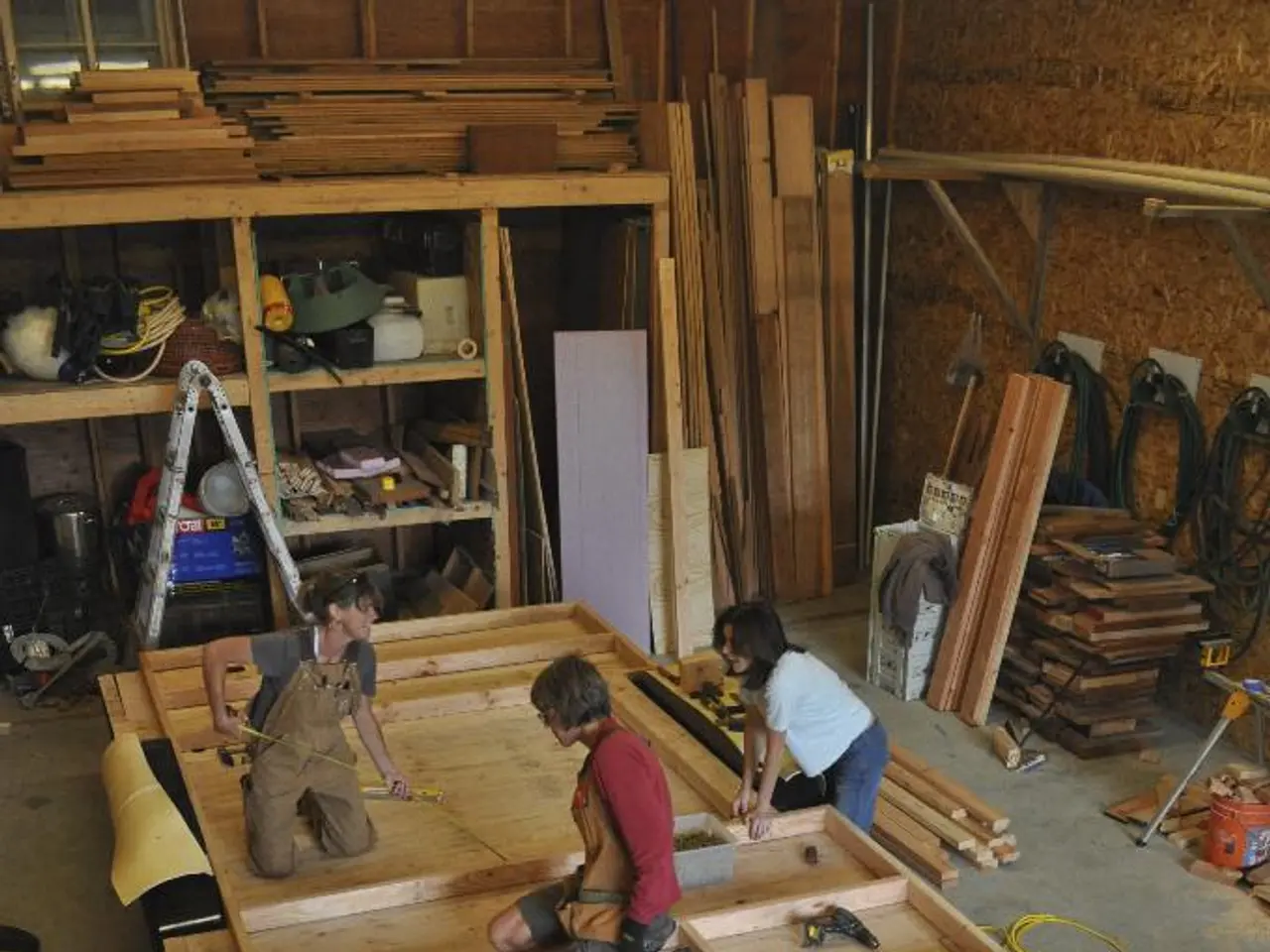Accelerating the Process: 5 Strategies for a Swift House Renovation as a Construction Professional
**Accelerating Home Renovations: Strategies for Maintaining Quality and Speed**
In the fast-paced world of house renovations, contractors are under pressure to deliver projects swiftly without compromising on quality. To achieve this balance, industry best practices offer a variety of strategies that enable contractors to speed up timelines while maintaining high standards.
One key approach is leveraging modern project management tools. These systems centralize all communications, documentation, and scheduling, ensuring that all stakeholders—contractors, clients, architects—remain aligned, reducing misunderstandings and enabling faster decision-making. Cloud-based platforms allow for real-time collaboration, minimizing errors and rework, while tools that allow daily progress updates and document version control help identify and resolve issues immediately.
Streamlining estimating and bidding processes is another effective strategy. Automated estimations move beyond manual spreadsheets, saving time, reducing errors, and generating professional, consistent proposals. Standardized assemblies for common renovation tasks, such as kitchen remodels, allow for fast, accurate, and repeatable bids.
Optimizing scheduling and resource allocation is essential for keeping projects on schedule. Advanced planning using scheduling tools with features like resource leveling and critical path analysis helps anticipate bottlenecks, allocate resources efficiently, and keep projects on track. Detailed work plans, broken down into clear phases with defined timelines and responsibilities, ensure teams know exactly what to do and when.
Embracing digital documentation and communication is also crucial. Paperless processes, digital contracts, change orders, and e-signatures eliminate delays associated with paperwork and in-person signatures. Maintaining a single, cloud-based repository for all project documents ensures everyone has access to the latest information and reduces lost or duplicate work. On-site coordination using group messaging apps enables quick resolution of on-site issues.
Investing in workforce development is another important factor. Continuous training on new tools, materials, and methods helps build a skilled, tech-savvy workforce that makes fewer mistakes, adapts quickly to changes, and is more efficient. Recruiting team members familiar with digital tools and collaborative project delivery methods reduces the learning curve and improves productivity.
Focusing on sustainable and efficient construction practices can streamline material flow, reduce lead times, and minimize environmental impact, while maintaining quality. Incorporating high-efficiency systems and passive design principles from the start can streamline installations and future-proof the project. Precise measurement tools ensure accurate material ordering and minimal waste during installation.
Maintaining high standards of communication and organization is vital for preventing misunderstandings and last-minute changes that can delay progress. Keeping clients informed and involved throughout the process, and ensuring sites are well-organized, helps minimize downtime and enables craftsmen to focus on their work without unnecessary interruptions.
Anticipating and planning for the unexpected is also key. Contingency budgeting, which allocates a portion of the budget for unexpected costs and delays, allows the team to address issues quickly without compromising quality. Flexible scheduling, which builds some flexibility into the schedule to absorb minor delays without derailing the entire project, is also recommended.
By integrating these strategies, renovation contractors can significantly reduce project durations while upholding—and often enhancing—the quality and craftsmanship that define their reputation. Optimal material procurement and timely delivery, efficient planning, and the use of project management tools provide a centralized platform to track progress, manage schedules, and collaborate with team members efficiently, enhancing communication and resource allocation. Establishing strong relationships with suppliers, planning ahead to order materials in bulk, and effective communication with the team can further prevent delays and keep the project on track. Embracing technology, such as construction management software, project scheduling apps, and virtual reality tools, can enhance project efficiency and speed. Breaking down projects into smaller, manageable tasks and creating a detailed project timeline is recommended for efficient project management.
- In the fast-paced world of house renovations, employing a skilled contractor who leverages modern project management tools, such as cloud-based platforms, automates estimations, and optimizes scheduling, can help streamline construction and fit-out while maintaining high-quality standards.
- Ensuring interior design, architecture, and lifestyle are aligned with a homeowner's vision, a renovation project requires both interior architecture and project management expertise to achieve a seamless home-and-garden transformation that complements the home-improvement objectives.
- Focusing on sustainable and efficient construction practices, contractors can minimize material waste, reduce environmental impact, and create a durable home while adhering to the highest standards of interior design and construction.
- Establishing open communication channels, contractors can maintain a clear understanding of client expectations, minimize misunderstandings, and quickly resolve issues as they arise, ensuring the renovation project stays on schedule and delivers the desired results.
- To overcome potential project delays, forward-thinking contractors implement contingency budgeting and flexible scheduling, and build relationships with reliable suppliers that ensure optimal material procurement and timely delivery, aiding in the smooth execution of the renovation project.






